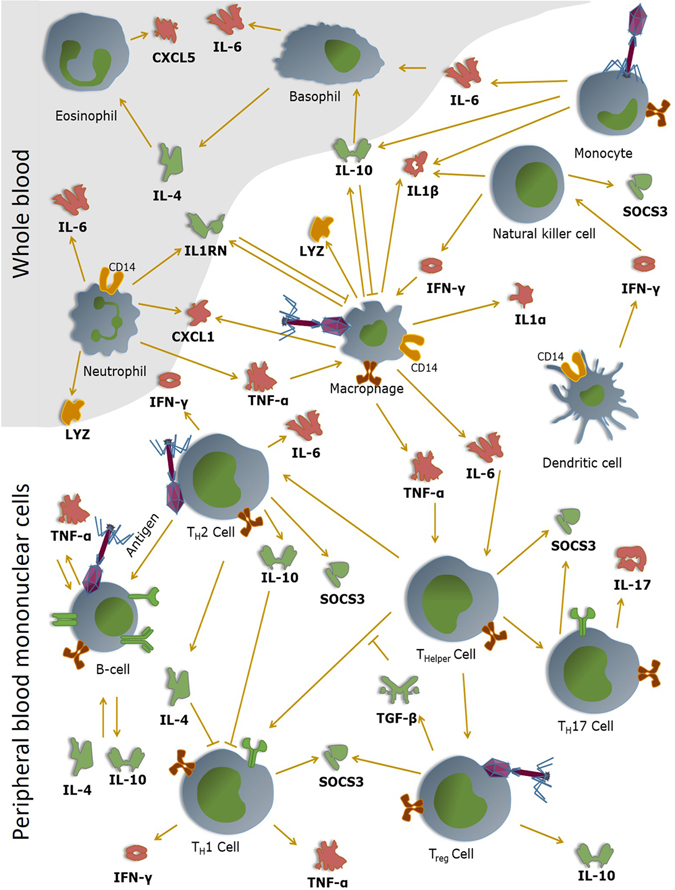Figure 6.

Hypothetical view of the interaction of bacteriophages with mammalian immune cells. Phages are able to interact with (currently unknown) immune receptors and induce corresponding immune responses. The immune responses induced by the bacteriophages can either be pro- of anti-inflammatory. For instance, the tested phages are able to induce the pro-inflammatory cytokines IL1α and IL1β. Through the induction of IL1RN by the phage, the phage is able to inhibit the pro-inflammatory responses that are otherwise induced by these cytokines. Pro-inflammatory cytokines are marked in red (i.e. TNF-α, IFN-γ,IL1α, IL1β, IL-6, IL-17, CXCL1 and CXCL5), anti-inflammatory cytokines are depicted in green (i.e. TGF-β, IL-4, IL-10 and IL1RN). Dark orange depicts proteins that play a key role in the removal or perception of bacterial pathogens (i.e. CD14 and LYZ).
